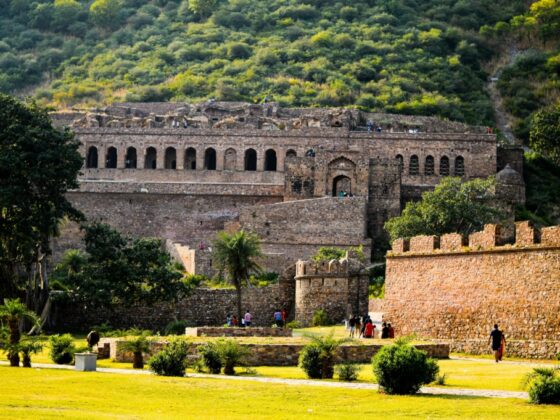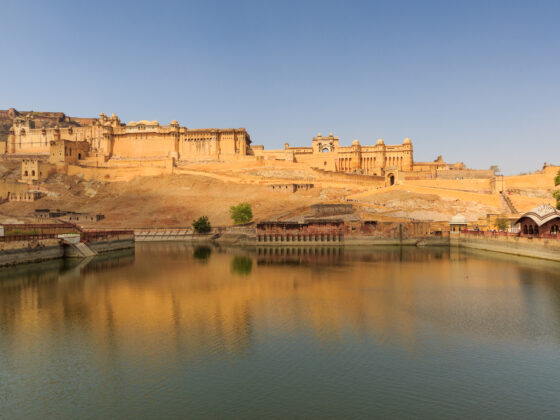Rajgarh, a tranquil town nestled in the heart of Madhya Pradesh, may seem like any other district on the Indian map. But behind its modest appearance lies a rich and regal heritage tied to one of India’s many princely states—the State of Rajgarh. With deep-rooted connections to the Umath Rajputs, this former kingdom once flourished under royal patronage, political diplomacy, and cultural brilliance. Before India gained independence in 1947, the Rajgarh royal family governed one of the over 560 princely states that dotted the Indian subcontinent—each ruled by hereditary monarchs under British suzerainty.
This article sheds light on the history of the Rajgarh royal family, their political legacy, and their significance in India’s socio-cultural fabric, especially as remembered through the personal lens of a descendant—whose grandmother hailed from this historic state.

📜 Rajgarh: A Glimpse into Its Royal Past
Before India gained independence in 1947, over 560 princely states dotted the country—hereditary monarchs ruled these semi-autonomous regions under British suzerainty. Rajgarh was one such state, founded in the 17th century by the Umath Rajputs, a distinguished clan of the Parmar (Pratihara) dynasty.
Strategically situated between Bhopal and Kota, Rajgarh emerged as a regional powerhouse, known for its military alliances, architectural fortresses, and cultural patronage. The Rajgarh Fort, with its towering gates and intricate carvings, still stands as a silent testament to its royal past.
👑 The Umath Rajputs: Warriors, Rulers, and Visionaries
The Umath Rajput clan traces its origins back to the legendary Raja Bhoj of Dhar, a sovereign of the Paramara dynasty. Known for their valor and administrative acumen, the Umaths established Rajgarh not merely as a seat of power, but as a symbol of honor and cultural identity.
Over the centuries, Rajgarh rulers maintained political ties with neighboring kingdoms like Narsinghgarh, Bhopal, and Jaipur, balancing diplomacy and defense with strategic marriages and alliances. Their rule was marked by:
-
Feudal administration, where local jagirs (landholdings) were managed by nobles.
-
Support for temples, Vedic scholars, and local art forms.
-
Tax reforms and patronage to agriculture and trade.
One notable aspect of Rajgarh’s history is its martial tradition. The Umath Rajputs frequently led armed campaigns to defend their territories against rival clans and even contributed soldiers to the British Indian Army under treaty obligations.
🌸 A Personal Connection: My Grandmother’s Roots in Rajgarh
For me, Rajgarh is not just a name from a history book—it’s a piece of personal heritage. My grandmother, a proud daughter of this princely lineage, carried the values of grace, courage, and dignity in every aspect of her life. Her stories, told with reverence, painted vivid pictures of royal ceremonies, ancestral homes, and the codes of honor that governed Rajput households.
She often spoke of the royal customs, the annual festivals observed in the palace, and the pride of being part of a family that once shaped the destiny of a region. Through her memories, I inherited a sense of belonging to a legacy that is both glorious and grounding.
🧭 Rajgarh After Independence: A Shift in Power, Not Legacy
The end of British colonial rule in 1947 also marked the integration of princely states into the Republic of India. Rajgarh acceded to the Indian Union and later became part of the newly reorganized state of Madhya Bharat, eventually merging into Madhya Pradesh.
While the royal titles and powers were abolished in the 1970s under the 26th Amendment to the Constitution, the cultural influence of the Rajgarh royal family endured:
-
Former palace estates were converted into heritage homes, schools, or government offices.
-
Family members continued to serve the region in politics, education, and social service.
-
The Rajput identity, rooted in honor and tradition, remained deeply embedded in Rajgarh’s local customs.
📚 Preserving the Legacy of Rajgarh’s Royals
Today, historians, descendants, and cultural organizations are actively working to preserve and document the royal history of Rajgarh:
-
They are archiving oral histories passed down through generations.
-
Researchers are digitizing the family trees of Rajput clans, including the Umath Rajputs.
-
Heritage experts are cataloging temples, forts, and ancestral homes to promote restoration and tourism.
-
Platforms and institutions like the Indian Royal Families (IRF) initiative are sharing stories of lesser-known princely states like Rajgarh, ensuring these legacies remain alive and accessible.
🕯 Final Thoughts: Honoring a Timeless Heritage
The story of Rajgarh is more than just a footnote in India’s royal history. It’s a living legacy that connects past and present, one that continues to inspire descendants and locals alike. Whether through ancestral stories, historic architecture, or shared cultural pride, the Rajgarh royal family remains an important part of India’s diverse royal tapestry.
As someone deeply rooted in this heritage, I feel a strong sense of responsibility to document, celebrate, and share the story of Rajgarh—not just as history, but as a testament to the spirit of a community that once ruled with honor and lives on through tradition.









